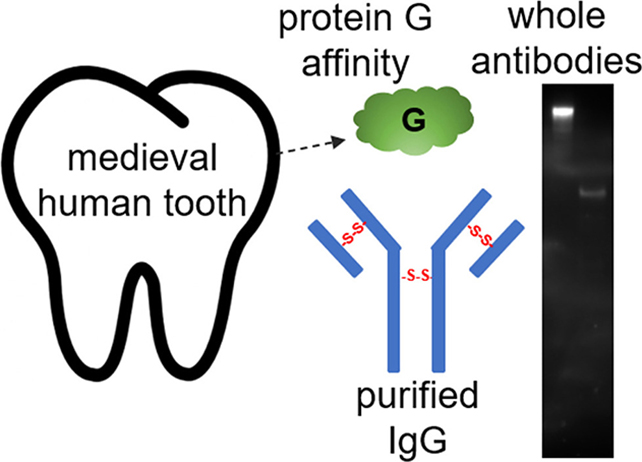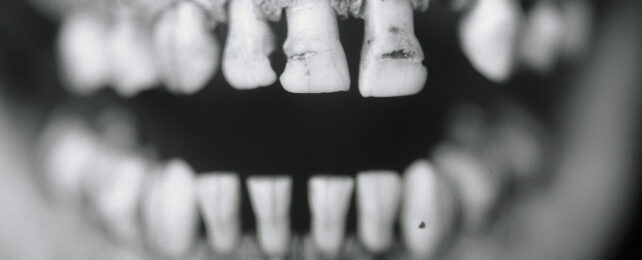An analysis of antibodies extracted from 800-year-old teeth has provided a new way to identify pathogens our ancestors contended with.
The process could potentially help us understand how human antibodies – proteins naturally produced by our bodies in self-defense – have developed through history.
Building on previous research, a team led by researchers from the University of Nottingham and University College London (UCL) in the UK conducted a process called affinity purification to identify molecules through the way they bind to other molecules.
These kinds of bindings are a crucial part of how the human immune system works, and they can help researchers retroactively identify antibodies and what they were designed to fight against.
Intact antibodies from teeth recovered from an English grave dated to between 1285 and 1470 CE had their protein sequences read and their reactivity tested against potential antigens. Crucially, the antibodies recovered from the teeth retained a large part of their original structure, and were still biologically active, enabling the scientists to measure their response against current viruses.

"In this case we found that antibodies from medieval teeth were able to recognize the Epstein-Barr virus, which causes glandular fever," says Anisur Rahman, a rheumatologist at UCL.
"In the future it could be possible to look at how antibodies from ancient specimens react to diseases present during those periods, such as the Black Death."
Although this study only involved three teeth, it demonstrates how viable this type of analysis is – and how it could be scaled up in the future.
This emerging field of research is known as paleoproteomics, where the latest chemical analysis techniques are used to identify proteins on ancient remains – proteins that are typically more resilient than any DNA fragments that might also be recovered.
In theory, we could be able to look back even further through our immunological history. Indeed, the researchers also looked at a mammoth bone dated back to some 37,000 years ago, showing that similar techniques could also be used to purify and recover proteins on much older samples.
Now this precedent has been set, more research can be done to verify exactly what these extracted proteins can tell us – including the way that diseases have evolved and how our bodies have evolved to fight them.
"In discovery science we come to expect the unexpected, but the realization that intact, functional antibodies can be purified from skeletal remains in the archaeological record was quite astonishing," says University of Nottingham biochemist Robert Layfield.
The research has been published in iScience.
